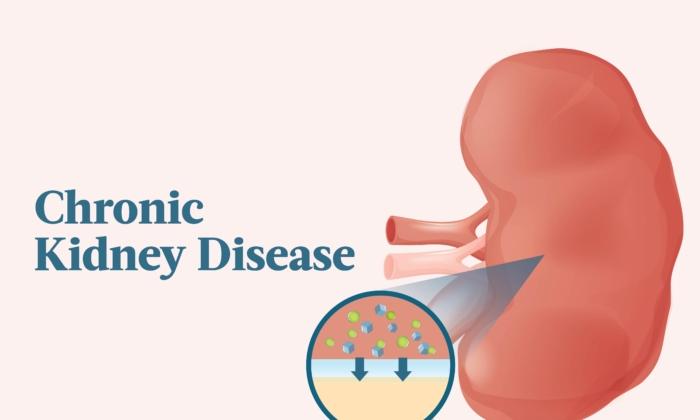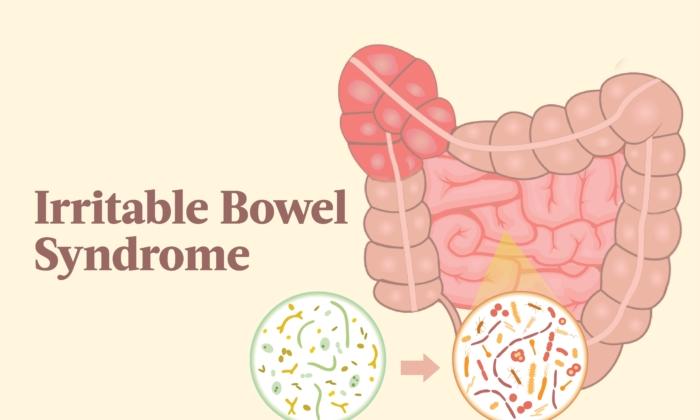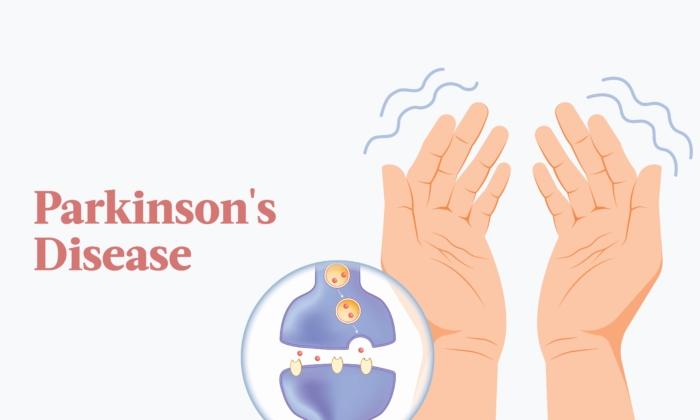Alzheimer’s disease is a progressive disorder of the brain. Affecting approximately 6.5 million people ages 65 and older, the disease causes the brain to shrink and its cells to slowly die. Alzheimer’s is the most widespread cause of a gradual decline in thinking, memory, social, and behavioral skills.
What Are the Common Types of Alzheimer’s Disease?
Alzheimer’s disease is classified into two types:Early Onset
Early-onset Alzheimer’s disease, also known as young-onset Alzheimer’s, appears in people between their 30s and mid-60s. This type represents 5 to 6 percent of the Alzheimer’s population.It is not fully understood why some people get the condition early on while others do not. For most people with early-onset Alzheimer’s, the cause is not related to any single genetic mutation.
Late Onset
The most common form of Alzheimer’s is late-onset Alzheimer’s disease. It surfaces in individuals in their mid-60s and accounts for 90 to 95 percent of Alzheimer’s cases.While APOE4 genes impact Alzheimer’s risk, the other elements that interact with genetics make it difficult to identify one specific cause of the disease.
What Are the Symptoms and Early Signs of Alzheimer’s Disease?
The signs and symptoms of Alzheimer’s disease will worsen with time and eventually become severe. People affected by early-onset Alzheimer’s may notice difficulty remembering conversations or recent events, but others do not usually notice these subtle changes. As symptoms progress, friends and family members will notice the changes.- Memory
- Thinking
- Decision-making
- Completing tasks
- Behavior and personality changes
- Skills
Memory
As Alzheimer’s-related memory loss worsens, so does the patient’s ability to function in most settings.People with Alzheimer’s may forget appointments, events, or conversations. They may repeat questions or statements and misplace items or put them in illogical locations.
Thinking
Alzheimer’s causes difficulty thinking and concentrating. Abstract concepts, like numbers, are challenging for patients to navigate.Everyday undertakings such as paying bills on time, managing finances, and carrying out multiple tasks simultaneously are incredibly challenging for patients.
Decision-Making
Alzheimer’s patients experience a decline in their ability to make rational decisions regarding everyday situations and circumstances.These patients may make poor decisions when choosing the appropriate clothes for the weather or making inappropriate choices in social settings.
Planning and Completing Tasks
As the disease progresses, routine activities such as getting ready for work or following a cooking recipe become problematic. In time, advanced Alzheimer’s patients forget how to perform basic tasks such as brushing their teeth or getting dressed.Behavior and Personality Changes
Brain changes associated with Alzheimer’s can affect a patient’s behavior and mood. According to Mayo Clinic, symptoms may include:- Mood swings
- Depression
- Social withdrawal
- Loss of interest in activities
- Wandering
- Loss of inhibitions
- Delusions, such as believing they’ve been robbed
- Anger and aggression
- Distrust in others
- Changes in sleep patterns
Skills
Although Alzheimer’s causes significant changes in skills and memory, patients can retain some of their skills even as symptoms worsen. This is because skills are controlled by parts of the brain that are affected later in the disease process.What Causes Alzheimer’s Disease?
The precise cause of Alzheimer’s disease isn’t entirely known. It’s understood that brain proteins fail to function normally, disrupting the usual routine of brain cells, also called neurons. This initiates a series of events that damage the neurons, causing them to lose connection to each other and ultimately die.Researchers theorize that for most people, Alzheimer’s is caused by a combination of lifestyle, genetic, and environmental factors that progressively affect the brain. However, from a genetic perspective, less than 1 percent of Alzheimer’s cases are caused by genetics that nearly guarantee a person will develop the disease.
Alzheimer’s disease begins years before the first symptoms appear. The damage usually originates in the part of the brain that controls memory. The loss of neurons begins to affect other brain regions in a fairly predictable pattern, and by the late stages of the disease, brain mass has diminished extensively.
- Plaques: Beta-amyloid is a piece of a bigger protein. When these pieces bunch together, they become toxic and interrupt neuron communication. The clusters form larger sediments called amyloid plaques containing other cellular debris.
- Tangles: Tau proteins help the brain transport nutrients and other essentials. In Alzheimer’s, the shape of the tau proteins changes, and the proteins accumulate in abnormal structures called neurofibrillary tangles. Tangles block the transport system and damage cells.

What Are the Stages of Alzheimer’s Disease?
As Alzheimer’s progresses, it eventually affects most brain areas and impairs language, judgment, problem-solving, memory, thinking, and movement.Preclinical
Preclinical Alzheimer’s disease is the period when the disease begins but long before any symptoms are present. This stage is usually identified in research settings when the patient isn’t experiencing or aware of any symptoms.Mild Cognitive Impairment (MCI)
Those with mild cognitive impairment experience changes in their thinking ability and memory. At this stage, changes have not begun to affect relationships and work. Those affected may find gaps in their memories, such as recent events or conversations.Mild Dementia
Mild dementia due to Alzheimer’s disease is usually the stage in which most patients are diagnosed. During this stage, family, friends, and doctors fully realize that an individual is struggling with thinking, memory, and performing daily activities.- Difficulty with problem-solving, complex tasks, and sound judgments.
- Personality and behavior changes including anger, irritability, lack of motivation, or feeling withdrawn.
- Memory loss.
- Getting lost or misplacing belongings.
- Difficulty organizing and expressing thoughts.
Moderate Dementia
Moderate dementia patients are more forgetful and easily confused. As a result, they need assistance with self-care and daily activities, such as dressing and bathing.- Demonstrate poor judgment: Moderate dementia patients may lose track of the day or month or where they live. They may mistake strangers for family or mix up family members.
- Require assistance with daily tasks: Patients may need help grooming, selecting proper clothing, using the bathroom, and more. At this stage, they may occasionally lose bladder or bowel control.
- Experience significant personality and behavior changes: Some patients may experience outbursts of aggression or restlessness, often later in the day. They may also become paranoid or suspicious.
- Wander: Individuals may begin to wander in search of familiar surroundings. These tendencies make it dangerous to leave patients in this stage alone.
- Experience greater memory loss: Moderate dementia patients may forget their phone number, address, or where they grew up. They may repeat stories or invent ones to fill memory gaps.
Severe Dementia
During this last stage of Alzheimer’s, mental function continues to diminish, and physical capabilities are further compromised.- Experience a decrease in physical abilities: At this stage, a patient may be unable to walk, sit, or hold their head up without help. Muscles may grow rigid, and reflexes become abnormal. Ultimately, the patient will lose control of bladder and bowel movements.
- Need daily assistance with personal care: The person will need help going to the bathroom, eating, dressing, and all other self-care routines.
- Lose the ability to communicate logically: During this period, a person may occasionally articulate phrases or words, but he or she can no longer speak logically.
Who Is More Likely to Develop Alzheimer’s Disease?
One in 10 people aged 65 and older has Alzheimer’s. Family history, age, genetics, infections, chemical exposure, and other factors play a role in who develops Alzheimer’s disease.Genetics and Family History
People with a parent or sibling who has been diagnosed with Alzheimer’s disease are at a higher risk of developing the disease.Sex
Women are more likely to develop Alzheimer’s disease than men, according to Harvard Medical School. The main reason is that women appear to live longer than men. According to actuarial life tables, it’s likely that a baby girl born in 2019 will live five years longer than a baby boy born the same year: 81 versus 76 years.Pollution
Studies link air pollution to dementia and Alzheimer’s. According to Mayo Clinic, air pollution, such as smoke from burning wood and traffic exhaust, significantly increase risk.Age
Older age is the primary risk factor for Alzheimer’s disease. Although the disease isn’t a part of the typical aging process, your chance of getting the disease increases as you age.- 4 in 1,000 people aged 65 to 74
- 32 in 1,000 people aged 75 to 84
- 76 in 1,000 people aged 85 and older
Head Trauma
There is evidence that traumatic brain injury (TBI) can lead to an increased risk of developing dementia or Alzheimer’s. The risk increases in individuals who have endured multiple or severe TBIs.Down Syndrome
Alzheimer’s disease is common among people with Down syndrome. Scientists theorize this is likely related to having three copies of chromosome 21.Mild Cognitive Impairment
People with MCI have an increased risk of developing dementia. If MCI mainly affects memory, progression to Alzheimer’s or dementia is more likely. If you are diagnosed with MCI, schedule routine appointments with your doctor to observe symptoms and progression.Heavy Alcohol Consumption
Excessive alcohol consumption has been known to affect the brain. Studies suggest that heavy alcohol use is associated with an increased risk of dementia, particularly early-onset dementia.Unhealthy Sleep Patterns
Studies suggest that poor sleep patterns, such that individuals have trouble falling or staying asleep, are associated with an increased risk of Alzheimer’s.Heart Health and Lifestyle
Research shows that the same risk factors linked to heart disease may also increase dementia risk. However, whether these factors increase dementia risk by exacerbating Alzheimer’s changes in the brain or by leading to vascular changes there is unknown. Heart disease risk factors include:- High blood pressure.
- Poorly managed type 2 diabetes.
- Lack of exercise.
- Smoking or exposure to secondhand smoke.
- High cholesterol.
Social Engagement
Engaging in activities and socializing arouses the mind and can help lower Alzheimer’s risk. Education seems to provide a similar effect. Education levels lower than high-school level are linked to Alzheimer’s risk.What Are the Tests to Detect Alzheimer’s Disease?
A critical component in diagnosing Alzheimer’s disease is identifying a patient’s symptoms. Feedback from friends and family members about a patient’s symptoms and their impact on daily life helps medical providers make informed decisions.Imaging studies and blood tests can help rule out other potential diagnoses, or they may assist your provider in identifying disease-causing dementia indicators.
Physical and Neurological Exam
Your physician will begin your Alzheimer’s screening by performing a neurological physical exam examining various factors, including:- Muscle tone and strength.
- Whether you can rise from a chair and walk across the room.
- Sight and hearing.
Neuropsychological Assessment
Your physician may conduct a brief mental status assessment to evaluate thinking skills and memory. Extensive forms of this test may provide greater detail about your cognitive function that may be measured against people of a similar education level and age.Laboratory Tests
Blood tests can determine whether other factors that can cause confusion and memory loss, such as low vitamin levels or thyroid disorder, are at play. Blood analysis may also be used to measure beta-amyloid and tau protein levels; however, these tests aren’t commonly available and may not be covered by insurance.Brain Imaging
Brain imaging can identify visible changes related to Alzheimer’s and other conditions that may cause similar symptoms, such as tumors, trauma, or strokes.Newer techniques may help identify specific changes in the brain caused by Alzheimer’s, but these are used primarily in clinical trials or major medical centers.
- Computerized tomography (CT): This specialized X-ray technology produces cross-sectional brain images. It’s generally used to rule out head injuries, strokes, and tumors.
- Magnetic resonance imaging (MRI): This imaging uses a magnetic field and radio waves to produce brain images. It can show shrinkage of some brain regions associated with Alzheimer’s disease and rule out other issues. An MRI is typically preferred over a CT scan to assess Alzheimer’s.
- Positron emission tomography (PET): A PET scan captures images of a disease process. A low-level radioactive tracer is injected into the blood to display a particular feature in the brain.
- Fluorodeoxyglucose (FDG) PET: This imaging scan shows where nutrients are poorly metabolized in the brain. Identifying patterns in these areas can help differentiate Alzheimer’s from other types of dementia.
- Amyloid PET: This type of PET measures the amount of amyloid deposits in the brain. Mainly used in research, an amyloid PET can also be employed to examine unusual or very early onset of symptoms.
- Tau PET: Used mainly in research settings, this PET measures tangles in the brain.
What Are the Complications of Alzheimer’s Disease?
The symptoms that characterize Alzheimer’s disease make it difficult for those inflicted to manage other health conditions.- Follow a treatment plan.
- Explain symptoms of another illness.
- Tell someone about being in pain.
- Explain medication side effects.
- Flu, pneumonia, urinary tract, and other infections.
- Trouble swallowing and inhaling food or liquid.
- Constipation or diarrhea.
- Falls and fractures.
- Impacted nutrition or dehydration.
- Dental issues such as tooth decay or mouth ulcers.
What Are the Treatments for Alzheimer’s Disease?
Currently, no known treatment regimens will cure Alzheimer’s, but the U.S. Food and Drug Administration (FDA) has approved a few drugs to help control symptoms and manage disease progression. The majority of the approved drugs are most efficient in individuals who are in the early or middle stages of the disease.Treatment for Mild to Moderate Alzheimer’s Disease
Treating mild to moderate symptoms of Alzheimer’s can help provide patients with dignity, comfort, and independence for a longer duration.Cholinesterase inhibitors improve cell-to-cell communication. Typically the first medications tried, these medications preserve a chemical in the brain that Alzheimer’s disease has diminished. As a result, patients will usually see modest symptom improvement.
- Galantamine
- Rivastigmine
- Donepezil
Treatment for Moderate to Severe Alzheimer’s Disease
Patients diagnosed with moderate to severe Alzheimer’s are treated with an N-methyl-D aspartate (NMDA) antagonist called memantine.This medication decreases symptoms, enabling patients to maintain some daily functions, such as using the bathroom independently, longer than they would have been able to without medication.
How Does Mindset Affect Alzheimer’s Disease?
Science has linked positive outlooks with better health outcomes. Those able to remain positive after an adverse life event seem to have better long-term health outcomes and lower rates of dementia.Scientists studied the association between positive affect and memory decline while considering gender, age, depression, education, negative affect, and extraversion. Their findings showed that memory declined with age, but more positive individuals had less memory decline over 10 years.
What Are the Natural Remedies for Alzheimer’s Disease?
Certain foods and supplements have proven beneficial in the management and prevention efforts against Alzheimer’s disease.Diet
Brain-boosting foods that support memory, such as whole grains, legumes, fruits, vegetables, fish, and healthier fats, may help improve memory function. Mayo Clinic recommends the following foods to optimize memory function.Whole Grains and Legumes
Complex carbohydrates such as cracked wheat, chickpeas, whole-grain couscous, and lentils are preferred brain food because they provide a sustained, slow supply of glucose. Neurons require glucose derived from carbohydrates to function properly. Whole grains and legumes take longer to metabolize and are high in B vitamin folate, which improves memory.Fruits
Watermelon is high in lycopene, a powerful antioxidant. In addition, it’s a great source of pure water, which is valuable to brain health. Even mild dehydration can reduce mental acuity and impair memory.Grapes have an abundance of memory-enhancing compound resveratrol. Concord grapes contain polyphenols, an antioxidant especially helpful in the brain.
Berries, especially blueberries, have powerful antioxidants that protect the brain from oxidative damage, preventing early aging and memory loss.
Vegetables
Dark, leafy greens, such as kale, spinach, and Swiss chard, can reduce age-related memory loss due to their antioxidants, such as vitamin C. Rich in folate, greens can improve memory by decreasing inflammation, which increases blood circulation to the brain.Seafood
Crustaceans and shellfish are excellent sources of vitamin B-12, a nutrient believed to help prevent memory loss. Crustaceans and shellfish are high in cholesterol, so moderation is necessary.Healthy Fats
Nuts are also a source of omega-3 fatty acids. These fats, found in foods such as walnuts, lower triglycerides, help moderate blood pressure, improve vascular health, and decrease the risk of blood clots.Supplements
Turmeric: This common household spice contains the antioxidant and anti-inflammatory compound curcumin, known for its ability to boost brain tissues. Studies suggest curcumin may slow the progression of Alzheimer’s by reducing the number of plaques in the brain. Additionally, it may also prevent the buildup and clumping of beta-amyloid proteins.How Can I Prevent Alzheimer’s Disease?
Alzheimer’s is not a preventable disease. However, numerous lifestyle risk factors can be modified to help lower your risk of developing the condition.- Eating a diet of fresh produce, healthy oils, and foods low in saturated fat, such as a Mediterranean diet.
- Avoiding excessive alcohol consumption.
- Following treatment recommendations to manage high blood pressure, diabetes, and high cholesterol.
- Exercising regularly.
- Quitting smoking, if you do.
- Maintaining healthy sleep patterns.
- Getting acupuncture.
- Staying social and keeping an active mind.
- Maintaining oral hygiene.
- Incorporating vitamins and supplements into your daily routine.






